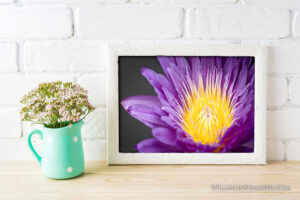There are many, many details that we photographers like to worry about. The prints that we make are a big one. We’ll spend hours upon hours researching the best ways to create prints, the best papers to use. When the prints are finished, we examine them exhaustively to make sure that they’re up to our standards. For many of us, something like the printmaking process is as complex and in-depth as creating the photographs in the first place.
But the thing is, this is the type of detail that photographers and art collectors appreciate. The general population, however? The regular consumers who have not spent lifetimes immersed in the world of art? These are the kinds of details that may be lost on them.
That’s something to remember during the artmaking process. We photographers are picky. Connoisseurs of art, people who have been immersed in the fine details for years or decades—these people are picky. Most people, however, will never notice the difference between one type of paper and another. Most people won’t even be able to look at a print and determine that it is a gelatin silver print as opposed to some other type. They won’t catch the fact that the focus is a little bit soft, or that a stray leaf or cloud is just slightly out of place.
What people do notice is the content of a photograph. Content is the universal truth. It is the one thing that matters the most no matter who your potential audience might be. An image’s content—the subject material—is what gets people to stop and take a deeper look. This is true of both the connoisseurs and the laymen who simply want to enjoy beautiful imagery.
This is something that is important for all of us to remember. I think we get so wrapped up in the details—making sure we’re producing the finest quality prints, making sure the focus is sharp, making sure that colors are rendered with absolute perfection. Truthfully, there are hundreds of smaller details like these that occupy the minds of photographers to the point of distraction.
And that’s not to say that these things are not important. Certainly, we can’t let ourselves get sloppy for the sake of content. Soft photographs aren’t as visually arresting, and nobody wants to purchase a print that will deteriorate in a decade. But sometimes these details do take the focus away from what really counts, which is the content.
So that’s something to keep in mind as you create artwork for people to enjoy. Our time is limited, so spending lots of it frittering over the smallest of details may not be the most productive way to spend that time. Keep the focus on the imagery, it’s content, the meanings that you’d like to impart. All the rest is kind of like the cherry on top of the sundae—nice to have, but the photograph should still be beautiful and meaningful even if it isn’t printed on the finest paper available or even if some other small detail has been overlooked.
Now go and enjoy the beauty of God’s creation through your lens.





